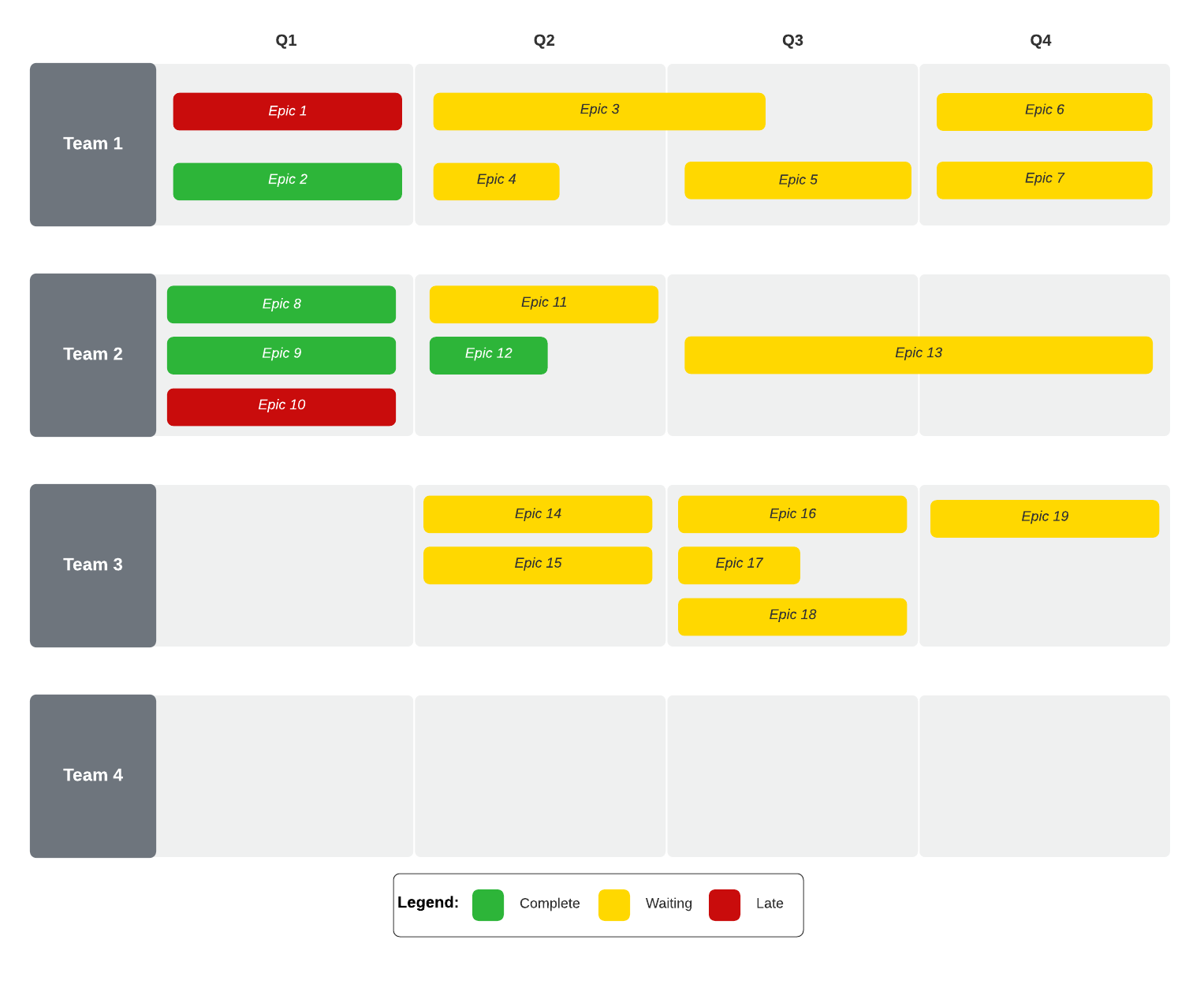
7 biggest pain points for product owners and how to overcome them
Reading time: about 7 min
Product owners wear many hats. From business strategist and product designer to customer liaison and project manager, product owners have a lot to juggle to get a product from concept to delivery. This is especially true in Agile teams where cross-functional collaboration and quick turns are the norm.
With so many moving parts to keep track of, it’s no surprise product owners have their fair share of challenges to manage, overcome, and balance.
Below we will cover some of the most common pain points Agile product owners face and tips for how to overcome them.
1. Lack of information and analysis before planning
Data and information are the lifeblood of a product owner’s work. Without key customer data, market research, and user information, product owners and developers are working in the dark to develop successful products. In other words, without good data to inform your decisions, it’s difficult to move forward strategically or accurately.
This is one of the tougher challenges faced by product owners because they don’t always have control in solving it. The short answer to the problem is, of course, more research.
If you don’t have the information you need to analyze and create robust customer stories and strategies, work with stakeholders to get access to more data. Take time to do more research before you start planning. Then be ready to adapt as needed when you get new information.
2. Poor prioritization and changing priorities during sprints
Successful Agile development relies on clear prioritization at every stage of development.
Easier said than done, of course. Product owners often struggle to keep priorities clear, especially when needs change in the middle of a sprint. Edge cases (which have a lower impact, occur infrequently, or have feasible workarounds) can distract you from higher impact features, so it’s important to get prioritization right from the start.
So how can product owners ensure sprints remain focused and strategic from beginning to end?
One way is to define story point priorities early on based on your product and business strategies. As you consider various user stories, put a higher priority on those that will have the broadest positive impact on your customer base. Consult with other stakeholders to get consensus upfront so that everyone is on the same page going into your next sprint.
3. Forecasting delivery and timelines
Forecasting deliverables is one of the biggest product owner challenges. There are so many variables and unknowns to consider that it’s nearly impossible to predict an accurate delivery timeline. Plus, humans love to underestimate how much time something will take and risk the dreaded overpromising and underdelivering—and no one is happy when that happens.
Despite its challenges, however, forecasting is an essential part of the product owner toolbox.
Good forecasting helps you build confidence with leadership, secure buy-in more easily, and support your team’s autonomy and efficiency. If you can’t predict release dates with decent accuracy, it makes it difficult for sales and marketing to plan and schedule campaigns, and it’s harder to have conversations with leadership about tradeoffs, strategy, and priorities.
So how can you take the pain out of prediction?
One of the most effective ways to nail your forecast is to develop a strong product roadmap. Your roadmap will help you outline a release plan that includes all the work to complete that feature such as analysis, design, development, and testing.
Additionally, you can use the shared knowledge of your Agile team to discuss expected timeframes for each component of the sprint. This will not only help you come to a consensus on a viable timeframe for release, but it also reveals assumptions and ensures everyone feels good about the final commitment.
4. Aligning teams and getting buy-in
Most products typically have at least two or three stakeholders in addition to the product owner. These stakeholders often have different objectives and priorities for the product, which can lead to competing visions for the project’s direction (and the expected timeline for delivery). Additionally, Agile development requires collaboration across teams and functions, which can make communication and buy-in on strategy and emerging changes a challenge.
Product owners have to navigate these competing priorities and perspectives to bridge the gap and align teams, stakeholders, and leadership.
Achieving alignment requires product owners to clearly communicate at every stage and reinforce the value of the work throughout the development process. Take advantage of your roadmap to illustrate your plans and strategy and check in with stakeholders regularly to update them on progress and changes.
5. Overwhelming product backlog
One of the main responsibilities of product owners is managing the product backlog and ensuring that it is visible, transparent, and clear to all stakeholders and developers. If your developers don’t have access to backlog information and updates, you risk misalignment on goals, accountabilities, and deadlines.
A solid product roadmap can also help with this, so you avoid falling behind on your product backlog or focusing on the wrong priorities.
Your product roadmap acts as your guide and anchor throughout development so that you always know what to focus on, who is responsible, and when tasks are due. Lucidchart gets your roadmap up and running fast with customizable templates, simple data linking and imports so you can visualize information fast, plus shared access with your team making it easy to collaborate and quickly understand the big picture.
A product roadmap is especially important for ensuring your team develops products strategically rather than reactively. For example, without a clear roadmap, you are more likely to get bogged down in ad hoc requests and focus on developing features solely in response to customer feedback. If you don’t have a strategy in place, you risk developing a product that is overly customized to your loudest customers (or your loudest stakeholders), which isn’t always best for your target customer base as a whole.

6. Managing multiple stakeholders
Whenever you’re working with multiple people—especially from cross-functional teams—there is opportunity for miscommunication and misalignment. Miscommunication can lead to costly delays in development, unclear priorities, and wasted time.
Your role as a product owner includes managing these competing perspectives and priorities by setting expectations and maintaining clear communication throughout development.
Use your product roadmap to clearly outline the product plans including strategy, priorities, and accountabilities across teams. By communicating early and often (and documenting plans and responsibilities), you can keep everyone on the same page.
7. Decision fatigue
Decision fatigue one of many product owner challenges. They often get asked to handle too many choices in a short amount of time. Agile development is all about flexibility and strategic adaptation—but this also means decisions have to be made frequently to handle new information, evolving needs, competing stakeholder priorities, and frequent questions and clarifications from team members throughout the day.
With so many decisions to make (often right on the spot), it can quickly feel like you’re just spinning your wheels.
While decision-making will always be part of the gig, product owners can alleviate some of the burden. Make sure you take regular breaks, seek advice from trusted leaders and co-workers, and weigh your options strategically.
For instance, take advantage of decision-making tools like decision trees, decision matrices, and good old-fashioned brainstorming. Remember to refer to your original product roadmap as well to make sure you have a clear vision of where you want to go and how you want to get there as you weigh your options.
Product management isn’t easy. Product owners have to be strong communicators, effective bridge-builders, and always adaptive to changing needs and priorities. It’s a balancing act, but with the right tools and support, product owners can navigate these pain points and deliver world-class products again and again.

Learn how Lucid can level up your Agile planning.
Check it outAbout Lucidchart
Lucidchart, a cloud-based intelligent diagramming application, is a core component of Lucid Software's Visual Collaboration Suite. This intuitive, cloud-based solution empowers teams to collaborate in real-time to build flowcharts, mockups, UML diagrams, customer journey maps, and more. Lucidchart propels teams forward to build the future faster. Lucid is proud to serve top businesses around the world, including customers such as Google, GE, and NBC Universal, and 99% of the Fortune 500. Lucid partners with industry leaders, including Google, Atlassian, and Microsoft. Since its founding, Lucid has received numerous awards for its products, business, and workplace culture. For more information, visit lucidchart.com.
Related articles
Why incorporate Agile testing into your production process
In Agile testing, a dedicated team of QA specialists test and check for issues throughout the process, not just at the end. Learn more about Agile testing, including benefits, key principles, and testing methods.
Product differentiation: How to position yourself in the market
If you're running a business in today's crowded market, how do you make your products stand out? Through product differentiation. Discover what product differentiation is, why it's important, what types there are, and how to develop a strategy around it.
Why you need a business analyst on your product development team
In this article, we go over why a business analyst (BA) should be an essential member of any product or software development team. Learn how a good BA can help you harness and tame your company data to better connect with your customers.
How to increase developer productivity
Learn practical strategies to evaluate and enhance developer productivity.
